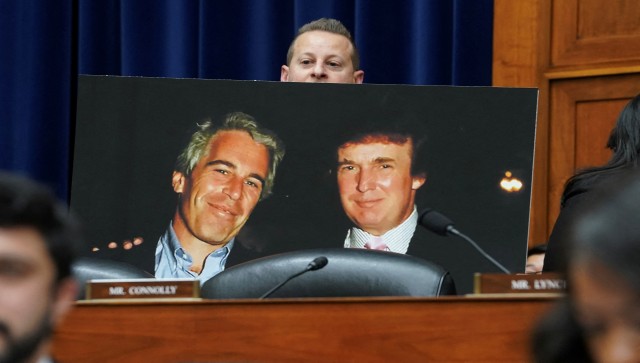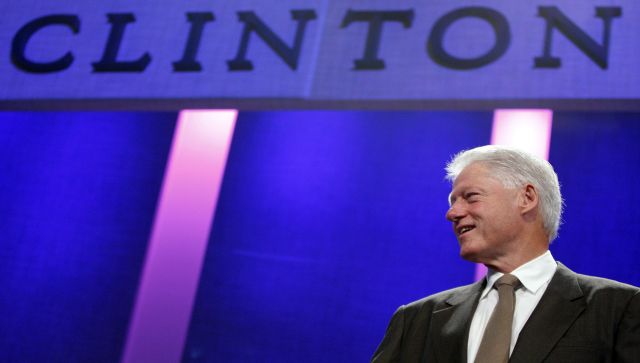Albert Einstein was born on 14 March 1879 in Germany, and is well known for coming up with his ‘Theory of Relativity’, that Einstein used to model the large scale structure of the universe. In 1921, Einstein won the Nobel Prize for Physics, for his investigations into the photo-electric effect. He is most well known for his formula of mass and energy equivalence, E = mc2. Many of Einstein’s predictions would continued to be proved true well after his death. Here are five modern geniuses who can be considered as the Einsteins of today.
Kip Thorne Kip Thorne is one of the leading experts in the world on the astrophysical implications of Einstein’s General Theory of Relativity. Thorne is a researcher in astrophysics and gravitational physics, and is well known for his investigations into black holes, gravitational waves and relativistic stars. Thorne has come up with a controversial theory where wormholes, bridges between two black holes, are used for the purpose of time travel.
As a consultant, one of Thorne’s most well known projects is being the science adviser for the Christopher Nolan science fiction film, Interstellar. The original draft for the movie, outlined in the book The Science of Interstellar , had a black hole that was visually more overwhelming, with a number of smaller black holes and neutron stars around Gargantua, that is used for maneuvering spaceships with the assistance of gravity. The Science of Interstellar is one of two pop science books written by Thorne, the other one being Black Holes and Time Warps: Einstein’s Outrageous Legacy .
Thorne contributed ideas to the science fiction book Contact by Carl Sagan, which also has a movie based on it with the same name. Thorne was one of the founders of the LIGO project, in 1984. The detection of gravitational waves originating from the collision of two black holes, was the biggest physics story of 2016, and started a new era of observational astrophysics. India is all set to receive its own LIGO facility, only the third such detector in the world and the first one outside the United States. India’s LIGO facility, dubbed “Indigo” is expected to be operational from 2024 .
Neil deGrasse Tyson Neil deGrasse Tyson is well known science communicator, who has the knack of using comparisons to explain difficult to understand concepts. Tyson is most well known as a host of Cosmos: A Spacetime Odyssey, a television series that is a sequel to Carl Sagan’s Cosmos: A Personal Voyage. Tyson has conducted research in the fields of astrophysics and physical cosmology. In 2000, Tyson was dubbed the “sexiest astrophysicist alive” by the People magazine.
Tyson was one of the supporters of the classification of Pluto as a dwarf planet. His suggested approach, in agreement with new ways of understanding the solar system, supports classifying the planets as rocky planets, gas giants and trans Neptunian objects, instead of merely counting them. Tyson is particularly celebrated on the internet, for his tweets and regular Ask Me Anything (AMA) threads on Reddit, which are some of the most engaging and popular AMAs around.
Lene Vestergaard Hau Lene Vestergaard Hau is a Danish physicist known for being the first scientist to stop light. In initial experiments Hau managed to slow down light to the speed of a thirty kilometers per hour, and then managed to completely stop a beam of light. The work has implications in quantum computing, quantum cryptography, quantum optics and nanotechnology. The light was slowed down using an exotic form of matter known as the Bose-Einstein condensate.
The Bose-Einstein condensate is a gas that is so cold that the atoms lose most of their energy and behave like one big superatom. The Bose-Einstein condensate was theoretically believed to exist from the 1920, based on research by Satyendra Nath Bose that had been expanded by Albert Einstein. Hau’s team was one of the first to actually realise a Bose-Einstein condensate in the lab. Continuation of her experiments with Bose-Einstein condensates allowed Hau to convert matter to energy and vice versa. Nasa wants to study a Bose-Einstein condensate on board the International Space Station, in a lab that is dubbed as the coldest spot in the universe .
Paul Steinhardt Paul Steinhardt is the Albert Einstein Professor in Science at the Princeton University and is one of the leading researchers in the world on the origins of the universe. Steinhardt is one of the people who proposed the inflationary cosmology model, an important aspect of the contemporary understanding of the big bang theory. The early universe went through a phase of rapid expansion according to the inflationary cosmology model.
Steinhardt was one of the first scientists to investigate eternal inflation, a model of the universe where the inflation does not end, leading to the creation of multiverses. These investigations caused Steinhardt to question his earlier models of inflation, as well as the big bang. Steinhardt is one of the architects to theories that explain the origins of the universe that compete with the big bang, including ekpyrotic theory where the universe constantly repeats a pattern of birth, cooling and rebirth. Steinhardt is also one of the leading researchers in the world on the subjects of Dark Energy and Dark Matter.
Stephen Hawking Stephen Hawking is a theoretical physicist and cosmologist, well known for his popular books on theoretical physics, including the 1988 classic A Brief History of Time. Hawking is known for explaining obtuse scientific concepts, with clarity, to a lay reader. Hawking has also co-authored science books for children with his daughter. Hawking has important contributions to the field of general relativity. Hawking was the first to propose a single cosmological theory that combined the general theory of relativity and quantum mechanics.
Hawking suffers from a amyotrophic lateral sclerosis (ALS), a rare disease that made Hawking increasingly paralysed over the course of decades. Hawking uses a device attached to a functional cheek muscle to communicate using a speech generating device. Hawking has investigated the big bang, black holes, gravitational physics, and cosmological models. Hawking has made and lost several bets with other theoretical physicists.
Hawking conceded to Kip Thorne that the dark star Cygnus X-1 was in fact a black hole, while working as a visiting professor at Caltech. Hawking made a bet with Peter Higgs that the Higgs Boson would never be discovered, and lost the bet when CERN discovered the elusive particle. Hawking conceded he had lost, and proposed that Higgs should be given the Nobel prize, which he was. In 2009 Hawkings hosted a party for time travellers, and sent invites after the party. Nobody showed up.
Astrophysicist Stephen Hawking is also famous for his views on humans needing a cautious approach when it comes to initiating contact with extra terrestrial intelligences . According to Hawking, it is better to passively scan the skies for signs of intelligent life, as against spamming nearby stars and potential candidate hosts with communication signals. According to Hawking, the results of such a contact could be as disastrous to the local population as what happened following the discovery of America by Columbus.


)




)
)
)
)
)
)
)
)